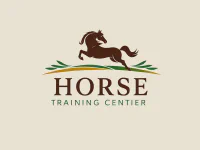Unlock Your Body's Potential: Yoga for Flexibility and Relaxation

Unlock Your Body's Potential: Yoga for Flexibility and Relaxation
Understanding Yoga: The Path to Flexibility and Relaxation
What is Yoga?
Yoga is a holistic practice that originated in ancient India, combining physical postures, breath control, meditation, and ethical principles. The term "yoga" itself comes from the Sanskrit word "yuj," meaning to unite or join. This philosophy emphasizes the interconnectedness of body, mind, and spirit, making it a comprehensive approach to wellness. Popular forms of yoga, such as Hatha and Vinyasa, incorporate various yoga poses that facilitate both physical strength and mental clarity.
The Role of Flexibility in Yoga
Flexibility is a cornerstone of yoga practice, allowing individuals to perform a wide range of yoga poses safely and effectively. Improved flexibility not only enhances physical performance but also contributes to overall wellness by reducing the risk of injury and alleviating muscle tension. For instance, the Downward Dog pose stretches the hamstrings, calves, and shoulders, promoting greater range of motion. Regular practice can lead to significant flexibility benefits, such as increased mobility in daily activities and enhanced athletic performance.
How Relaxation Enhances Your Yoga Practice
Incorporating relaxation techniques into your yoga routine can significantly enhance your overall experience. Practices such as mindfulness and meditation are essential components that help to center the mind and reduce stress. Techniques like breathwork encourage deep, conscious breathing, promoting a state of calm and focus. This not only aids in the execution of stretching techniques but also fosters a profound sense of stress relief. For beginners, starting with gentle relaxation exercises like Savasana can provide an introduction to the benefits of integrating relaxation with yoga practice.
Key Benefits of Yoga for Flexibility
Improved Muscle Tone
Practicing yoga poses such as Warrior II and Downward-Facing Dog can significantly enhance muscle tone. These poses engage various muscle groups, promoting strength while simultaneously stretching. The combination of isometric holds and dynamic movements not only builds muscle but also increases endurance. As a result, regular practitioners often experience a more toned physique and improved overall strength.
Enhanced Joint Health
Yoga is renowned for its ability to enhance joint health through targeted stretching techniques. Poses like the Cat-Cow sequence are particularly effective in increasing synovial fluid production, which lubricates the joints. This lubrication helps reduce the risk of injury and improves overall joint function. Furthermore, mindfulness during yoga encourages practitioners to listen to their bodies, leading to better awareness of joint limits and preventing overextension.
Increased Range of Motion
One of the primary flexibility benefits of yoga is the increased range of motion it provides. By incorporating poses like the Seated Forward Bend and Pigeon Pose, practitioners can lengthen tight muscles and improve overall mobility. These relaxation exercises not only target specific muscle groups but also incorporate breathwork and meditation, which together help release tension and promote a deeper stretch. For beginners, these routines can be modified to suit individual flexibility levels, ensuring safe progression towards greater mobility.
Essential Yoga Poses to Boost Flexibility
Top Yoga Poses for Beginners
For those new to yoga, starting with foundational poses is essential to build a solid practice and enhance flexibility. Cat-Cow Stretch is an excellent starting point; it involves moving between an arch and a rounded back, encouraging spinal flexibility and promoting relaxation. Another beneficial pose is the Child’s Pose, which stretches the hips, thighs, and back while fostering mindfulness and stress relief. Lastly, the Downward-Facing Dog not only lengthens the spine but also stretches the hamstrings, calves, and shoulders, making it a comprehensive pose for beginners focused on developing flexibility.
Intermediate Poses for Enhanced Flexibility
Once comfortable with basic poses, practitioners can explore intermediate options to deepen their stretching techniques. The Pigeon Pose is particularly effective for opening the hips and improving overall flexibility; it requires mindfulness and controlled breathwork to hold the position comfortably. The Triangle Pose enhances flexibility in the legs and torso while also promoting balance and stability. Finally, the Warrior II Pose not only strengthens the legs but also aids in developing flexibility in the groin and hips, making it a powerful addition to any yoga routine.
Advanced Poses for Deep Stretching
For advanced practitioners looking to push their flexibility boundaries, poses such as Hanumanasana (Monkey Pose) offer profound stretches for the hamstrings and groin. This pose requires strength and flexibility, making it ideal for those committed to deepening their practice. Another challenging yet rewarding pose is the King Pigeon Pose, which opens the heart and stretches the entire front body while demanding significant hip flexibility. Lastly, the Wheel Pose serves as an excellent backbend that stretches the shoulders, chest, and spine, contributing to overall flexibility and relaxation, perfect for those seeking to release stress through yoga.
Incorporating Relaxation Techniques in Your Yoga Practice
Integrating relaxation techniques into your yoga practice not only enhances your flexibility benefits but also significantly reduces stress levels. This holistic approach involves a blend of breathwork, mindfulness, and post-yoga relaxation techniques that can transform your routine.
The Importance of Breathwork
Breathwork is a foundational aspect of yoga that serves as a bridge between the mind and body. Techniques such as Ujjayi breath, often used in Vinyasa yoga, help create a steady rhythm that calms the nervous system. By inhaling deeply through the nose and exhaling through the mouth with a slight constriction in the throat, practitioners can enhance their stress relief efforts. Research has shown that consistent breathwork can lower cortisol levels, a key hormone associated with stress, thereby promoting overall well-being.
Mindfulness and Meditation
Mindfulness and meditation are integral to deepening the yoga experience. Engaging in mindfulness during yoga poses encourages practitioners to focus on the present moment, enhancing body awareness and emotional regulation. For example, a simple mindfulness practice can be incorporated during downward dog, where you concentrate on the sensations in your body and the rhythm of your breath. Furthermore, dedicating time to seated meditation after your yoga routine can help reinforce this awareness, guiding you into a state of relaxation and clarity. Studies indicate that regular meditation can improve flexibility in both body and mind, making it a powerful tool for yoga practitioners.
Post-Yoga Relaxation Techniques
After completing your yoga routine, it is essential to incorporate cool down stretches and relaxation exercises to solidify the benefits gained during practice. Techniques such as Supta Baddha Konasana (Reclining Bound Angle Pose) or Viparita Karani (Legs-Up-The-Wall Pose) not only facilitate physical relaxation but also promote mental tranquility. These poses allow the body to absorb the benefits of the practice and can significantly enhance your flexibility. Additionally, spending a few moments in Savasana (Corpse Pose) allows your body to integrate the effects of your practice, fostering a deeper sense of relaxation and peace.
Creating a Yoga Routine for Flexibility and Relaxation
Daily Yoga Practice Tips
To cultivate a successful yoga routine focused on flexibility and relaxation, incorporating specific yoga poses is essential. Poses such as the Downward-Facing Dog and Child's Pose are excellent for promoting flexibility while also encouraging mindfulness. Aim to practice at least 20 to 30 minutes each day, integrating stretching techniques that target major muscle groups. For beginners, starting with guided sessions available on platforms like YogaGlo or Alo Moves can help build a strong foundation.
Scheduling Your Yoga Sessions
Consistency is crucial for reaping the flexibility benefits of yoga. Choose a time that works best for you, whether it’s early morning to start your day with energy or in the evening as a way to unwind. Consider using a calendar app to set reminders for your yoga sessions, making it easier to prioritize your practice. For instance, setting aside Sundays for a longer session that combines various relaxation exercises and meditation can be particularly effective in enhancing your weekly routine.
Listening to Your Body
Yoga is inherently about tuning into your body and understanding its needs. As you progress in your practice, pay attention to what feels right and adjust your poses accordingly. If a certain pose causes discomfort, modify it or choose alternatives that better suit your body. Incorporating breathwork during your sessions not only aids in relaxation but also enhances your connection to your body. Techniques such as deep belly breathing can significantly reduce stress levels, making your practice more enjoyable and effective.
Additional Resources and Tools for Yoga Enthusiasts
Recommended Online Yoga Classes
For those looking to enhance their flexibility and relaxation through yoga, online classes can be an invaluable resource. Platforms like Yoga with Adriene offer a wide variety of classes tailored to different skill levels, including a dedicated series for beginners focusing on foundational yoga poses and stretching techniques. Adriene Mishler emphasizes mindfulness and breathwork, making her classes ideal for stress relief and relaxation exercises.
Another excellent option is Glo, which provides on-demand yoga routines that cater to various needs, from flexibility enhancement to meditation practices. Their classes feature expert instructors who guide practitioners through comprehensive sequences that emphasize both physical and mental well-being.
Yoga Apps for Flexibility
In the age of technology, several apps can enhance your yoga practice right from your smartphone. Down Dog is a highly recommended app that allows users to customize their yoga routines, focusing on specific goals such as increasing flexibility or mastering relaxation techniques. With a variety of settings for experience levels, Down Dog can adapt to your personal yoga journey.
Another noteworthy app is Asana Rebel, which combines yoga with fitness routines. It features guided classes specifically designed to improve flexibility benefits and promote mindfulness through structured breathwork and meditation sessions. This dual approach can enhance your overall yoga experience, making it more holistic.
Books and Blogs on Yoga Techniques
For those who prefer literature, "The Heart of Yoga: Developing a Personal Practice" by T.K.V. Desikachar is a classic that offers insights into various yoga poses and techniques. This book emphasizes the importance of tailoring your practice to your individual needs, making it a great resource for both beginners and advanced practitioners.
In addition, the blog Yoga Journal is a treasure trove of information, offering articles on yoga techniques, mindfulness practices, and the latest research on the benefits of yoga for flexibility and stress relief. With contributions from experienced yogis and instructors, it serves as a reliable source for anyone looking to deepen their understanding of yoga and its many facets.
Frequently Asked Questions
What types of yoga are best for flexibility?
Styles like Hatha, Vinyasa, and Yin Yoga are particularly effective for enhancing flexibility through gentle stretching and sustained poses.
How often should I practice yoga for flexibility?
Aim to practice yoga at least 3-4 times a week to see noticeable improvements in flexibility and relaxation.
Can beginners practice yoga for flexibility?
Absolutely! Yoga is accessible to all levels, and beginners can start with gentle poses tailored for flexibility.
What are the relaxation benefits of yoga?
Yoga promotes relaxation by reducing stress, improving mental clarity, and enhancing emotional well-being through mindfulness and breathwork.
Are there specific breathing techniques in yoga for relaxation?
Yes, techniques such as deep belly breathing, alternate nostril breathing, and 4-7-8 breathing pattern are effective for relaxation.
